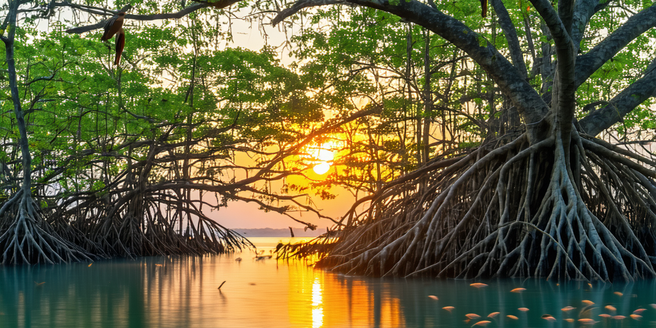
Understanding the Importance of Mangroves
Mangroves are vital coastal ecosystems providing a wide range of ecological services. They act as natural barriers against storm surges, reducing coastal erosion, and serving as breeding grounds for marine life. Mangroves also play a crucial role in carbon sequestration, helping to mitigate climate change. They support biodiversity, offering habitat for numerous species of fish, birds, and other wildlife. Despite their immense value, mangroves are under threat due to human activities such as deforestation, pollution, and land conversion. Understanding their importance is essential for conservation efforts and ensuring the sustainability of coastal communities that rely on these ecosystems for their livelihood. Protecting and restoring mangroves is imperative not only for environmental health but for economic stability and resilience against climate changes.
Challenges Faced in Mangrove Restoration
Mangrove restoration faces several significant challenges. One major issue is the lack of awareness and understanding of the complexity of mangrove ecosystems. This often results in poorly planned restoration projects that fail to account for local environmental conditions and the specific needs of different mangrove species. Additionally, land conversion for agriculture, aquaculture, and urban development continues to threaten existing mangrove areas. Funding and resources for restoration efforts are often limited, and political support may be lacking. Furthermore, restoration can be hindered by conflicts of interest between stakeholders. Overcoming these challenges requires comprehensive planning, collaboration among stakeholders, and investment in research and education to ensure that restoration efforts are effective and sustainable.
Innovative Approaches to Restoration Efforts
Innovative approaches to mangrove restoration are essential for overcoming traditional challenges and enhancing success rates. Scientists and conservationists are employing methods such as hydrological restoration, which involves restoring the natural water flow to degraded areas. Community-based approaches are also being implemented, encouraging local populations to participate in restoration activities, thus fostering stewardship and sustainable management. Technological advancements, like the use of drones for mapping and monitoring, are being integrated to increase efficiency. Additionally, techniques like using biodegradable structures to stabilize sediments and create favorable conditions for natural regeneration are gaining traction. These innovative strategies not only improve restoration outcomes but also increase community involvement and awareness, ensuring that restoration efforts are both impactful and sustainable.
Successful Mangrove Restoration Case Studies
Numerous successful mangrove restoration projects serve as benchmarks for future initiatives. One notable example is the restoration of the Mekong Delta in Vietnam, where mangroves were replanted to counteract coastal erosion. The project restored thousands of hectares and improved the livelihoods of local communities by enhancing fisheries. Another success story is the reforestation efforts along the coastlines of the Philippines, where community involvement was a key factor. In Australia, efforts in the Elcho Island region have also showcased how traditional ecological knowledge can be integrated into modern restoration practices. These case studies demonstrate the importance of tailored approaches that consider local social, economic, and environmental factors, showing that successful mangrove restoration is possible with adequate planning and community support.
Community Involvement in Restoration Projects
Community involvement is a cornerstone of successful mangrove restoration projects. Local communities are often the most affected by mangrove degradation, and their active participation can lead to sustainable restoration outcomes. Involving communities in restoration efforts not only provides vital labor and resources but also ensures that the restored areas are managed and protected in the long term. Education and awareness campaigns help communities understand the value of mangroves, strengthening the commitment to conservation. Additionally, integrating traditional knowledge with scientific approaches can yield more effective restoration strategies. The empowerment of local communities through capacity building and participation in decision-making processes is crucial for the resilience and success of mangrove restoration projects.
Future Prospects for Global Mangrove Restoration
The future of global mangrove restoration looks promising as awareness and commitment to these vital ecosystems grow. International collaborations and funding initiatives are emerging to support large-scale restoration projects worldwide. Innovations in restoration science and technology continue to evolve, offering new methods and tools to enhance restoration success rates. Policies and frameworks at the national and international levels are increasingly recognizing the importance of mangroves, leading to stronger protective measures. Additionally, the integration of mangrove restoration into climate change adaptation strategies highlights their role in mitigating environmental impacts. As research progresses and more restoration projects achieve success, the potential for restoring and preserving global mangrove ecosystems becomes increasingly achievable, fostering biodiversity and protecting coastal communities.
